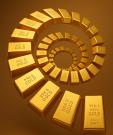ECB Meeting In September 2017 And Gold

On Thursday, the European Central Bank released its most recent monetary policy statement. What does it say about the ECB stance and what does it imply for the gold market?
Monetary Policy Statement: Accelerated Growth But Volatile Exchange Rate
The ECB kept its monetary policy unchanged at its last meeting. The bank neither expanded existing programs nor introduced any new policy measures. However, the ECB announced that in the fall it would decide on the calibration of our policy instruments beyond the end of the year.
The bank noted that economic growth had accelerated more than expected in the first half of 2017. However, although the ECB raised the outlook for real GDP growth in 2017, the outlook for the next years remained unchanged. And, importantly, compared with the June 2017 projections, the outlook for inflation has been revised down from 1.4 percent to 1.3 percent for 2018 and from 1.6 to 1.5 for 2019. The main reason for these revisions was the recent appreciation of the euro (see the chart below).
Chart 1: EUR/USD exchange rate over the last year.

Hence, the statement says:
“(…) the recent volatility in the exchange rate represents a source of uncertainty which requires monitoring with regard to its possible implications for the medium-term outlook for price stability.”
It means that the ECB is worried about the recent moves in the EUR/USD exchange rate, which could make the bank to adopt a very cautious approach. Indeed, the statement points out that the key policy rates will remain at their present ultra low levels for an extended period of time, and well past the horizon of the ECB’s asset purchases. It implies that although Draghi may announce some tapering in October, the overall ECB’s stance will remain very dovish.
Draghi’s Press Conference: Brace For October
Draghi’s answers to the questions at the press conference were, as always, very interesting. This time, the journalists focused mainly on two issues: the appreciation of the euro and the details of the likely tapering in the fall. Draghi admitted that inflation was revised downward in the staff projections mainly due to the appreciation of the exchange rate. He did not want to say what the correct level of the exchange rate was, but said that the ECB used $1.18 in its projections. As a reminder, the current level of the EUR/USD exchange rate is about 1.20., or 1.7 percent higher. By October, the euro may appreciate further, which could force the ECB to make another downward revision in the inflationary outlook and, thus, taper very dovishly.
By the way, when it comes to the details of the upcoming changes in the quantitative easing program, Draghi did not want to specify an exact date of these decisions, but he assured said that “probably the bulk of these decisions will be taken in October,” unless some risks materialize in the meantime. What we also know is that the ECB will probably change the length the asset purchase program and the size of the monthly flows, but not the issue or issuer limits to the program, and definitely not the policy interest rates.
Conclusions
The bottom line is that the recent ECB meeting confirmed that the next step of the bank would be to begin reducing monetary stimulus. However, given the recent appreciation of the euro and continually subdued inflation, the tapering would be very dovish. Nevertheless, the September monetary policy statement and Draghi’s press conference were bullish for the gold, on balance (see the chart below).
Chart 2: Gold prices from September 6 to September 8, 2017.

This is because tapering would mean the narrowing of the divergence in monetary policy between the Fed and the ECB. Moreover, Draghi’s comments did little to deter euro bulls. And although the appreciation of the euro may soften the tapering, it should not be a concern for the gold bulls, as the strengthening of the shared currency against the U.S. dollar is positively correlated with the yellow metal.
Disclaimer: Please note that the aim of the above analysis is to discuss the likely long-term impact of the featured phenomenon on the price of gold and this analysis does not indicate (nor does it aim to do so) whether gold is likely to move higher or lower in the short- or medium term. In order to determine the latter, many additional factors need to be considered (i.e. sentiment, chart patterns, cycles, indicators, ratios, self-similar patterns and more) and we are taking them into account (and discussing the short- and medium-term outlook) in our trading alerts.
********


















